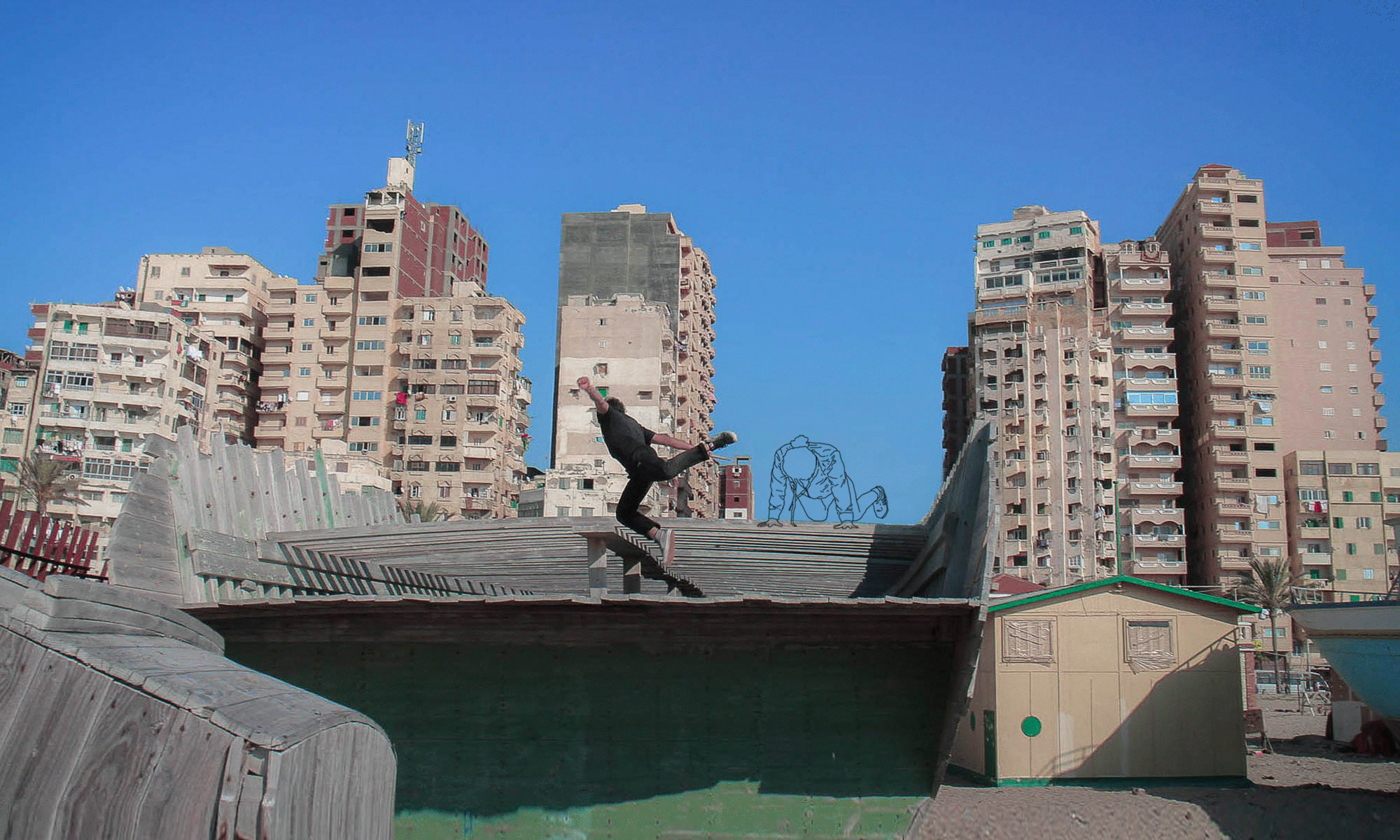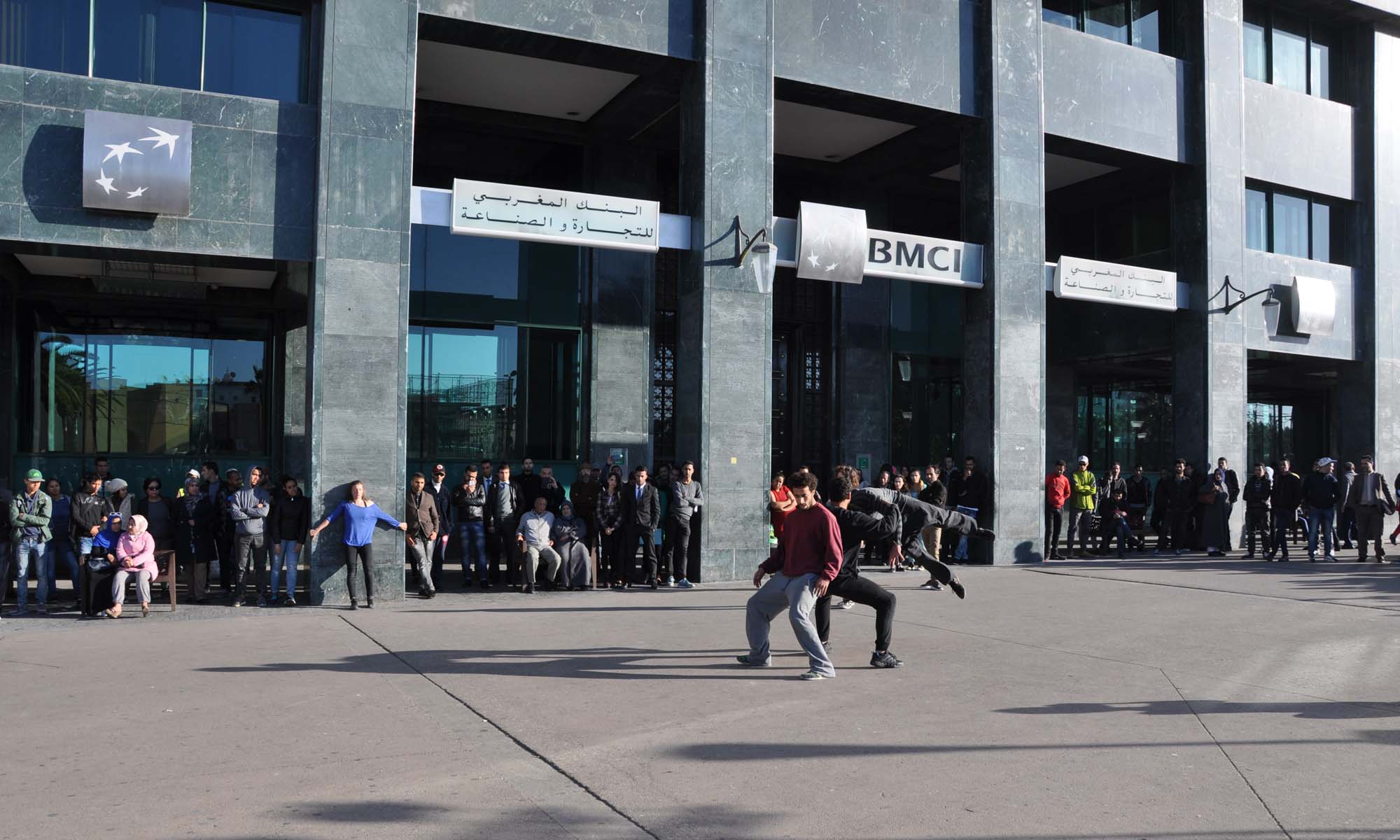-by Meryem Jazouli, choreographer and director of Espace Darja
The united nations square
First of all it is useful to briefly present this place located in the center of Casablanca that, like many Moroccan cities, consists of an old medina and a new city. Between the two, the United Nations Square creates a link, like a bridge between the past and the present. Recognizable thanks to its cupola nicknamed “Kora Ardia”, it is the meeting point of the city’s main arteries and is one of the most important squares in Casablanca.
This square is therefore a meeting point, a place of passage, and a gathering spot for all casablancans without exception (be they near or at the outskirts of the city).
However, it is not only the emblematic situation of this square that determined my choice, but also the particularly symbolic relationship between the medina and the new city. This motivated my desire that a choreographic gesture be placed between them, as if to prolong the link.
Dancing with the architecture of the city as a backdrop, I quickly decided to make SHAPERS exist in the heart of Casablanca, it seemed to me an opportunity to challenge the dancers (even for a short time) to apprehend a history and, for some of them, their history through a danced gesture.
How do you make a gesture, your gesture, in a space like this?
How do you give it enough life to echo that architecture, this framework and in the public mind?
With generosity, sobriety and a lot of presence, the dancers learned to carry, transmit, question and even to react to the public around this choreographic object which they defended relentlessly.
It was not a question of confronting the square, but rather of trying to become one with it, to dive into it with poetry, sensitivity and emotion. The dancers had the humility and ambition to give it another dimension, one that art allows when it meets all these conditions.
The close relationship offered by the United Nations Square (in this case between dance and an audience), allowed us to fulfill one of the major objectives of the SHAPERS project: making dance, carried by young performers, accessible and common ( through shared space).
For the dancers of this project, the United Nations Square also offered the opportunity to meet and understand the cultural diversity of this city (that the majority discovered for the first time). They learned to observe, touch and be touched by all the spaces they occupied and they learned to do so with curiosity, sensitivity and respect.
All of these adjustments and movements allowed them to ask questions, questions necessary when you are a young artist approaching public space through the practice of dance.
How do we exchange with others but also between us dancers?
What traces can we or do we want to leave in the places we cross?
What difference do we cultivate or not?
And finally, how could a symbolically strong public square participate in personal and professional trajectories?
These are, briefly and perhaps incompletely, the reasons that led me to choose the United Nations Square as a “scene” for the first steps of SHAPERS.
Espace Darja [Casablanca, Morocco] founded by choreographer Meryem Jazouli, is a place for artistic residencies and cultural experimentation, locally known as a platform for dialogue, encounters, and performances. Its aim is to develop contemporary dance in Morocco. www.espacedarja.com


